Sigma Xi Distinguished Lecturers, 2019–2020
Potential hosts should contact lecturers directly to book events. In making arrangements, hosts should be specific about dates, lecture topic, scope of the lecturer's visit and any special accommodations that may be called for.
Each lecturer has designated his or her topic(s) for three different types of audiences. Where more than one level is shown, the lecture can be adjusted to the needs of the audience:
- P (Public)
Aimed at presenting scientific issues of general concern to a public audience.
- G (General)
Intended for a normal Sigma Xi audience of both scientists and other scholars representing a broad range of disciplines.
- S (Specialized)
Aimed at scientists and students in fields that are closely related to that of the lecturer.
Steven Ackerman
Professor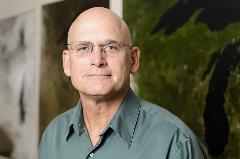
University of Wisconsin-Madison
Email
Phone: 608-263-3647
Web
- The Sinking of the Edmund Fitzgerald: The Ship, the Song and the Storm (P, G)
- Weather Satellites: Providing a Birds Eye View of Earth (P, G)
- The History and Future of Weather Satellites (G)
Steve Ackerman has extensive experience in research, education and public communications. Along with being the Director of the Cooperative Institute for Meteorological Satellite Studies (CIMSS), Dr. Ackerman is a Professor of Atmospheric and Oceanic Sciences at the UW-Madison and the Associate Vice Chancellor for Research. His research focuses on using satellite observations to study Earth. He is a recipient of NASA’s 2010 Exceptional Public Service Medal, the 2009 American Meteorological Society’s Teaching Excellence Award, and, in 2007 was recognized for his contributions to the Intergovernmental Panel on Climate Change (IPCC). Steve is an active and visible proponent of the Wisconsin Idea to communicate science and the impact of the university beyond the classroom. Steve is one of the “Weather Guys”, a popular and lively program on Wisconsin Public Radio where he and Professor Jon Martin have been answering caller's questions about weather and climate since 1998. The “Weather Guys” also have a weekly column in the Wisconsin State Journal.
Robbin Chapman
Associate Provost and Academic Director of Diversity and Inclusion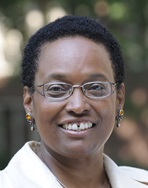
Wellesley College
Email
Phone: 781-283-3511
Web
- STEM and non-STEM Disciplines: Are They Mutually Exclusive? (P, G)
- Diversity and Inclusion in the Learning Enterprise: Implications for Learning Technologies (G)
- Rendering the Invisible Visible: Student Success in Exclusive Excellence STEM Environments (G, S)
Dr. Robbin Chapman is Associate Provost and Academic Director of Diversity and Inclusion, and Lecturer, Education Department at Wellesley College. Her designed-based course, EDUC/CS 322: Learning and Teaching in a Digital World, is where students reimagine learning in partnership with computational technologies. Her students have presented at various conferences, including the College’s Digital Scholarship Day. Dr. Chapman earned her S.M. and Ph.D. degrees in Electrical Engineering and Computer Science from Massachusetts Institute of Technology. Her research interests include designing computational tools for learning in public spaces and culturally-responsive pedagogy. Publications include the book, The Computer Clubhouse: Constructionism and Creativity in Youth Communities, and chapters in Social Capital and Information Technology, Communities of Practice: Creating Learning Environments for Educators, Wiley Handbook of Learning Technology, and the forthcoming Injecting Multidisciplinary Perspectives of Race and Gender for Diversification in STEM. Dr. Chapman is regional liaison, Ford Foundation Fellowship Program, National Academies of Sciences, Engineering, and Medicine.
James P. Collins
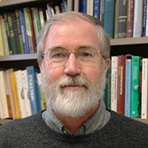 Virginia M. Ullman Professor of Natural History and the Environment
Virginia M. Ullman Professor of Natural History and the Environment
Arizona State University
Email
Phone: 480-965-4578
- Extinction in our times: Global amphibian decline (P, G, S)
- Altering nature with gene drives—We can. But should we? (P, G, S)
- Science education in a rapidly changing political, cultural, and economic landscape (G, S)
Professor Collins’s B.S. is from Manhattan College and his Ph.D. is from the University of Michigan. He studies host-pathogen biology and its relationship to the decline and extinction of species, the intellectual and institutional factors that have shaped Ecology's development as a discipline, as well as Ecological Ethics. Dr. Collins was chair of ASU’s Biology Department, Director of the Population Biology and Physiological Ecology program at NSF, and head of the Biological Sciences Directorate at NSF. He is a Fellow of AAAS, a Fellow of the Association for Women in Science, and Past President of the American Institute of Biological Sciences. Professor Collins served as chair of the Board of Directors for the Association of American Colleges and Universities. He is currently chair of the Board on Life Sciences of the US National Academies of Sciences, Engineering, and Medicine. Dr. Collins is the author of numerous peer reviewed papers and book chapters and co-author with Martha Crump of Extinction in Our Times. Global Amphibian Decline.
Aaron Dominguez
Dean, School of Arts and Sciences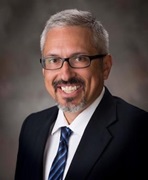
The Catholic University of America
Email
Phone: 202-319-5115
- The Higgs Boson (P, G, S)
- Science, Technology, and Faith (P, G)
Dr. Aaron Dominguez joined the School of Arts and Sciences from his previous position as the Associate Dean for Research and Global Engagement and a Full Professor of Physics and Astronomy at the University of Nebraska-Lincoln (UNL). Dr. Dominguez, whose area of research is experimental high energy physics, has a strong history of research and grant activity, including a National Science Foundation (NSF) CAREER grant, continuous funding for the past twelve years, and a recent cooperative agreement with the NSF for $11.5 million. As part of this award, Dr. Dominguez led a team that included researchers from ten universities in the construction of the next generation of particle detectors for the group’s Compact Muon Solenoid experiment at the Large Hadron Collider operated by the CERN Laboratory in Geneva, Switzerland.
Tim Gay
Willa Cather Professor of Physics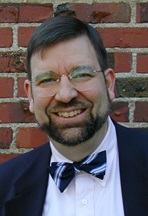
University of Nebraska - Lincoln
Email
Phone: 402-472-2773
Web
- Why Isn't God Ambidextrous? (P, G, S)
- Football Physics (P, G)
- One Atom Too Many: An Atomic Physicist's Attempt To Learn About Simple Homonuclear Diatomic Molecules (S)
Timothy Gay is the Willa Cather Professor of Physics at the University of Nebraska-Lincoln. After growing up in the small farming town of Pleasant Hill, Ohio, he attended Phillips Academy in Andover, Massachusetts and received his B.S. degree in physics from the Caltech in 1975. He graduated from the University of Chicago with a Ph.D. in experimental atomic physics in 1980, and held a postdoctoral appointment at Yale University in nuclear and atomic physics before joining the faculty of the University of Missouri-Rolla (now the Missouri University of Science and Technology) in 1984. Gay moved to the University of Nebraska-Lincoln in 1993. He has published over one hundred refereed scientific papers and has been the principal investigator on over $7M of research grants, primarily in the area of atomic, molecular and optical physics, high-energy nuclear physics, and neutrino physics. In addition to his work in the laboratory, Gay is known for teaching the largest physics class in the world: the 90,000 Nebraska Husker football fans that convene in Memorial Stadium in Lincoln on home football game Saturdays. During a pause in the action, Gay’s lessons are shown on the giant television screens at either end of the field. They have covered such topics as Newton’s Laws (blocking and tackling), projectile motion (kicking and punting), kinematics (chase strategies), and the ideal gas law (will filling the football with helium yield better hangtime?). Laboratory demonstrations have featured Gay being tackled by a 370-pound lineman and learning the finer points of passing from Heisman Trophy winner Eric Crouch. These lessons served as the basis of Gay’s book, The Physics of Football (2nd edition; Harper-Collins). Professor Gay is a Fellow of the American Physical Society (APS) and currently serves on its Board of Directors and as the Speaker of the APS Council.
Clifford V. Johnson
Professor, Department of Physics and Astronomy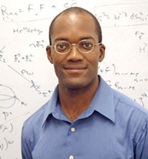
University of Southern California, Los Angeles
Email
Phone: 213-821-1772
Web
- Beyond Space and Time: Suggestions From String Theory About the Underlying Nature of Spacetime (P, G, S)
- Graphic Physics: Exploring Contemporary Physics with Comic and Sequential Art (P, G)
- Black Holes as Heat Engines: New connections between black holes and thermodynamics (G, S)
Dr. Clifford V. Johnson is a professor in the Physics and Astronomy Department at the University of Southern California. His research (as a member of the Theory Group) focuses on the development of theoretical tools for the description of the basic fabric of Nature. Dr. Johnson has been awarded the National Science Foundation's CAREER Award (1997), the Institute of Physics' Maxwell Medal and Prize (2005), and a Simons Foundation Fellowship (2016),
Dr Johnson spends a lot of time talking about science with members of the public in various venues. He loves helping artists, filmmakers, writers, and other shapers of our culture include science in their work in some way. He has a personal blog called Asymptotia, and writes regularly there about his research and other work.
Sir Christopher Lange
Professor of Radiation Oncology, College of Medicine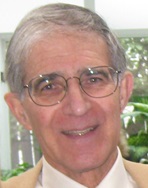
Professor of Molecular & Cell Biology, School of Graduate Studies
Director of Radiation Research and Radiation Biology
Associate Director of Radiation Oncology Residency Program
State University of New York, Downstate Medical Center
Email
Phone: 718-270-1050
- Stem Cells & Regeneration: A Quantitative Explanation of Organismal Survival (G, S)
- Cancer Stem Cells: The Key to Individualization of Cancer Therapy (G, S)
- Mammalian Chromosome Structure in Interphase (S)
Prof. Lange’s entire career has dealt with understanding the mechanisms of how ionizing radiations affect molecules (especially DNA and the induction and repair of double strand breaks), how the kinetics of those changes affect cell survival and how changes in cell survival determine the survival of tissues, organisms, and tumors. This has led to many seminal works, often more than a decade ahead of the field. These studies have also shown the importance of radiation research in many other fields of science (physiology, cell biology, structural biology, genetics, biophysics, polymer physical chemistry, etc.) and medicine (radiation oncology, sonography, etc.).
Upon graduation from MIT (1961) with an S.B. in Physics (minors in Biology, Chemistry and Philosophy and thesis in Alex Rich’s lab on x-ray crystallography – isolation from rabbit muscle, crystallization and unit cell determination of diphosphofructo aldolase), Lange went to Oxford University, where he worked in Frank Ellis’ Radiation Therapy Department in the Churchill Hospital, as a Medical Research Council Research Assistant, and subsequently at the Paterson Laboratories of the Christie Hospital & Holt Radium Institute in Manchester, as a tenured Research (later Senior Research) Officer in the National Health Service, in both places under the tutelage of Professor Laszlo G. Lajtha ( a founder of the field of stem cell kinetics; later CBE). Lange received his doctorate from Oxford University (D.Phil., Fac. Med.) in 1968.
Lange also became a Professor of Physiology & Biophysics and then of Molecular & Cell Biology in the SUNY Downstate School of Graduate Studies (1992- ), Associate Director of the Radiation Oncology Residency Program (1998- ), and Associate Chair of Radiation Oncology (2010-2016).
Lange has been honored with several awards, including: (1) The Knight’s Cross, Order of Merit, Republic of Poland (KCOM), awarded by the President of Poland (11/21/2004) for outstanding contributions to Polish Science and Education; (2) an Honorary Lifetime Consultantship to the Swietokrzyskie Centrum Onkologii, Poland (2005); (3) named Scientific Advisor to the New York State Assembly (13th and 16th ADs; 2010); (4) election to the Board of Directors (1999-2005) and the Executive Committee (2002-05), of Sigma Xi, The International Scientific Research Honor Society; (5) the Presidential Certificate of Gratitude for Contributions to Science, Faculty of Science Presidential Distinguished Lecturer, Hirosaki University, Japan (1979); and (6) election as an Honorary Member, Omicron Delta Epsilon (International Economics Honor Society) (1978). Lange is a biographee of many Who’s Whos, and since 2006, annually, of Marquis’s Who’s Who in the World. In 2017 Lange received the Marquis Who's Who Lifetime Achievement Award. He also serves as a referee for 28 professional journals.
Laurie McNeil
Bernard Gray Distinguished Professor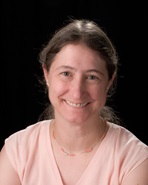
University of North Carolina at Chapel Hill
Email
Phone: 919-962-0963
Web
- OPV, OLED, OFET, Oh my! Photons, Electrons and Phonons in Organic Semiconductors (S)
- Changing the Climate for Women in Science (G)
- Good Vibrations: The Interplay of Music and Physics (P)
Laurie McNeil is the Bernard Gray Distinguished Professor in the Department of Physics and Astronomy at the University of North Carolina at Chapel Hill. She earned an A.B. in Chemistry and Physics from Radcliffe College, Harvard University, and a Ph.D. in Physics from the University of Illinois at Urbana-Champaign. After two years as an IBM Postdoctoral Fellow at MIT (with the late Prof. Millie Dresselhaus) she joined the faculty at UNC-CH in 1984 and has been there ever since, with the exception of sabbatical sojourns at Argonne National Laboratory, DuPont Central Research & Development, and Nanyang Technological University in Singapore. She serves as a Deputy Editor at the Journal of Applied Physics. Prof. McNeil is a materials physicist who uses optical spectroscopy to investigate the properties of semiconductors and insulators. She is a Fellow of the American Physical Society and has held a variety of leadership roles in that organization. She was the inaugural holder of the Kathryn McCarthy Lectureship at Tufts and the Dorothy K. Daspit Lectureship at Tulane and has worked throughout her career to enhance the representation and success of women in physics. As a Chapman Family Fellow and Academic Leadership Fellow at the Institute for the Arts & Humanities at UNC-CH she led the transformation of the teaching of the introductory physics courses in her department to use research-validated, student-centered pedagogy. Together with a colleague in the Department of Music at UNC-CH she teaches a course for first-year undergraduates on the physics of musical instruments. Students in the course build their own unique instruments and give a public performance of their own compositions for ensembles of those instruments.
Natalie Munro
Professor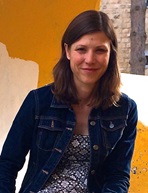
University of Connecticut
Email
Phone: 860-878-9414
Web
- The First Feast: How Communal Meals became a Central Part of Human Rituals (P, G, S)
- From Hunting to Herding: The Emergence of Animal Domestication in Southwest Asia (P, G, S)
- The Spread of Agriculture into Europe: the Case of Franchthi Cave, Greece (P, G, S)
Natalie Munro is a professor in the Department of Anthropology at the University of Connecticut. She is a graduate of the University of Arizona (Ph.D. 2001), Simon Fraser University (M.A. 1994) and Southern Methodist University (B.S 1991). In 2001-2002 she held a postdoctoral fellowship at the National Museum of Natural History at the Smithsonian Institution. In 2015-2016 she was a fellow at the University of Connecticut’s Humanities Institute and in 2017-2018 she was a visiting professor at the Mandel Scholion Center of Interdisciplinary Research at the Hebrew University in Jerusalem. Munro studies the transition from foraging to farming societies in Southwest Asia using ancient animal remains. She is most interested in the formative conditions of agriculture and animal domestication, and the spread of Neolithic societies into Europe. Using a behavioral ecological framework she connects large zooarchaeological databases from individual sites to broader themes such as human demography, animal domestication, sedentarization, and the emergence of public ritual practice at a regional scale. Munro has active research projects in Turkey and Israel, has recently worked in Jordan and Greece and is published widely in peer-reviewed journals such as Science, PNAS, Current Anthropology, and Journal of Human Evolution. Her research has been supported by grants from the National Science Foundation and the Wenner-Gren Foundation for Anthropological Research. She has served as an Associate Editor for the Journal of Human Evolution, and is a long-term board member of the Connecticut Museum of Natural History.
June Pilcher
Alumni Distinguished Professor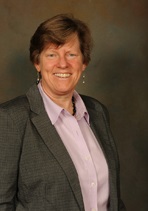
Clemson University
Email
Phone: 864-656-4985
Web
- Just Sleep Already! (P, G)
- That Tricky Human Brain (P, G)
- Applying Science outside of Science (S)
June J. Pilcher is an Alumni Distinguished Professor of Psychology at Clemson University. She earned her Ph.D. in Biopsychology from the University of Chicago (1989). She was enlisted in the US Navy as a hospital corpsman prior to completing her B.A. and served as an officer as a research psychologist in the US Army after receiving her Ph.D. She started her academic career at Bradley University before joining the faculty at Clemson University in 2001. Dr. Pilcher has been named a Fellow in the Association for Psychological Science. She was also named as the Outstanding Researcher of the Year for Clemson’s Sigma Xi Chapter in 2011 and was the 2015 recipient of the Class of ’39 Award at Clemson University. Dr. Pilcher was the Fulbright-Freud Visiting Scholar 2011-2012 at the University of Vienna and the Sigmund Freud Museum in Vienna, Austria and a Fulbright Specialist for Public/Global Health at the Finnish Institute for Occupational Health and Oulu University in Oulu, Finland in 2017. In the 2018-2019 academic year, she is serving as a Jefferson Science Fellow at the U.S. Agency for International Development in Washington, D.C. Dr. Pilcher’s research is broadly based on the effects of stress on performance, health, and well-being. She has taught a wide range of classes focused on brain and behavior, human nature, and health. She has given over 100 invited talks locally, nationally, and internationally. Dr. Pilcher’s other interests include training in a non-competitive, traditional martial art which she teaches as Leisure Skills classes at Clemson and working with a greyhound adoption agency to find homes for ex-racing greyhounds. She is always excited to talk to all types of audiences about either of these topics as well as her more scientific topics of interest.
Tatyana Polenova
Professor, Chemistry and Biochemistry 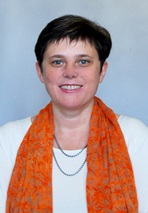
University of Delaware
Email
Phone: 302-831-1968
Web
- Understanding Structural Biology of HIV-1 Protein Assemblies by Integrating Experimental and Computational Approaches (G, S)
- The Critical Role of Natural Sciences and Science Education in Sustainable Society (P, G, S)
Tatyana Polenova is a Professor of Chemistry and Biochemistry at the University of Delaware. She received her B.S. degree from Moscow State University (Russia) in 1992, and a Ph.D. degree from Columbia University in 1997. After postdoctoral position at Columbia, in 1999 she joined the faculty of CUNY-Hunter College, and in 2003 relocated to the University of Delaware. Her research focuses on understanding structure, dynamics and function of biomolecular assemblies, using magnetic resonance and computational methods. Of particular interest are i) microtubule/motor protein assemblies whose malfunction is associated with multiple diseases; ii) HIV-1 protein assemblies whose function is important in the virus pathogenicity; iii) biotechnologically relevant vanadium-containing enzymes. Her research involves development of new NMR techniques. She served as the Chair and organizer of a number of international conferences and is an Editor and editorial board member of several journals in the fields of magnetic resonance and structural biology.
Federico Rosei
Professor, Director and UNESCO Chair 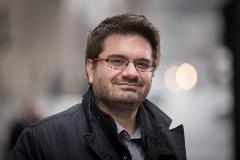
INRS Centre for Energy, Materials and Telecommunications
Email
Phone: 514-228-6906
Web
- Energy and Society: What type of Energy for the Future of Humanity? (P)
- Survival Skills for Scientists (G)
- Multifunctional Materials and Their Applications in Emerging Technologies (G, S)
Federico Rosei has held the Canada Research Chair (Junior) in Nanostructured Organic and Inorganic Materials between 2003 and 2013. He is Professor and Director of Institut National de la Recherche Scientifique, Énergie, Matériaux et Télécommunications, Université du Québec, Varennes (QC) Canada. Since January 2014 he holds the UNESCO Chair in Materials and Technologies for Energy Conversion, Saving and Storage and since May 2016 he also holds the Canada Research Chair (Senior) in Nanostructured Materials. He received MSc and PhD degrees from the University of Rome “La Sapienza” in 1996 and 2001, respectively. Dr. Rosei’s research interests focus on the properties of nanostructured materials, and on how to control their size, shape, composition, stability and positioning when grown on suitable substrates. He has extensive experience in fabricating, processing and characterizing inorganic, organic and biocompatible nanomaterials. He has published over 250 articles in prestigious international journals (including Science, Nature Photonics, Proceedings of the National Academy of Sciences, Advanced Materials, Angewandte Chemie Int. Ed., Journal of the American Chemical Society, Advanced Functional Materials, Nanoletters, ACS Nano, Biomaterials, Small, Physical Review Letters, Nanoscale, Chem. Comm., Applied Physics Letters, Physical Review B, etc.), has been invited to speak at over 260 international conferences and has given over 200 seminars and colloquia, over 50 professional development lectures and 35 public lectures in 42 countries on all inhabited continents.
His publications have been cited over 8400 times and his H index is 50. He is Fellow of numerous prestigious national and international societies and academies, including: the Royal Society of Canada, the European Academy of Sciences, the World Academy of Art and Science, the American Physical Society, the American Association for the Advancement of Science, SPIE, the Canadian Academy of Engineering, ASM International, the Royal Society of Chemistry (UK), the Institute of Physics, the Institution of Engineering and Technology, the Institute of Materials, Metallurgy and Mining, the Engineering Institute of Canada, the Australian Institute of Physics, Honorary Fellow of the Chinese Chemical Society, Foreign Member of the Mexican Academy of Engineering, Senior Member of the IEEE, Member of the Global Young Academy and Member of the Sigma Xi Society. He has received several awards and honours, including the FQRNT Strategic Professorship (2002–2007), the Tan Chin Tuan visiting Fellowship (NTU 2008), the Senior Gledden Visiting Fellowship (UWA 2009), Professor at Large at UWA (2010–2012), a Marie Curie Post-Doctoral Fellowship from the European Union (2001), a Canada Research Chair (2003–2013), a Friedrich Wilhelm Bessel Award from the Alexander von Humboldt foundation (2011), the Rutherford Memorial Medal in Chemistry (Royal Society of Canada 2011), the Herzberg Medal (Canadian Association of Physics 2013), the Brian Ives lectureship award (ASM international / Canada Council 2013), the Award for Excellence in Materials Chemistry (Canadian Society for Chemistry 2014), the NSERC EWR Steacie Memorial Fellowship (2014), the José Vasconcelos Award for Education (World Cultural Council 2014), the IEEE NTC Distinguished Lectureship 2015, the Lash Miller Award (Canada Section, Electrochemical Society 2015), the Chang Jiang Scholar Award (Government of China), the Khwarizmi International Award from the Iran Research Organization for Science and Technology (IROST), the Recognition for Excellence in Leadership from the American Vacuum Society, the Selby Fellowship from the Australian Academy of Sciences, the John C. Polanyi Award (Canadian Society for Chemistry 2016), the Outstanding Engineer Award (IEEE Canada 2017) and the Sigma Xi Distinguished Lectureship (2018–2020).
Eric E. Simanek
Robert A. Welch Chair of Chemistry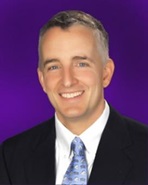
Texas Christian University
Email
Phone: 817-257-5355
Web
- Shots of Knowledge: The Science of Whiskey (G, P, S)
- Whiskey: A catalyst for social change (G, P, S)
- Using Nano to Fight Cancer (G, P, S)
- Triazine Dendrimers: Versatile Scaffolds for Medicine and Materials Science (S)
Raised in the farmland of central Illinois, Dr. Simanek grew up surrounded by corn destined for feed or alcohol. After completing a degree in chemistry at the University of Illinois in Urbana-Champaign in 1991, he pursued graduate work at Harvard University. Following completion of his PhD in 1996 and a post-doctoral stint at The Scripps Research Institute, Dr. Simanek joined the faculty of Texas A&M University in 1998 rising to the rank of full professor and leading the general chemistry program that serviced approximately 4000 students each semester. In 2010, he accepted the Robert A. Welch Chair at Texas Christian University where he now serves as department chair and director of the IdeaFactory. As a synthetic chemist, his research pursues the use of polymers (dendrimers) for drug delivery. His book, Shots of Knowledge: The Science of Whiskey, was published in 2016 and has garnered praise and international book awards.
Compton James Tucker III
Senior Biospheric Scientist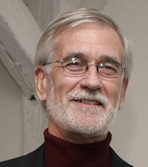
NASA/Goddard Space Flight Center
Email
Phone: 301-614-6644
- The Satellite Record of Earth’s Climate: The late 1970s to Now (P, G, S)
- Dinosaurs to Milankovitch Cycles: The last 250 Million Years (P, G, S)
- The Revolution in Food Security and Precision Agriculture (P, G, S)
Compton Tucker received his B.S. degree in biological science in 1969, his M.S. degree in 1973, and his Ph.D. degree in 1975, all from Colorado State. As a postdoctoral fellow at NASA/Goddard in 1975-1976, Tucker consolidated two near-infrared bands and adding a second short-wave infrared band to the thematic mapper instruments on Landsat-4 and -5. He was also responsible for making the first and second bands on the Advanced Very High Resolution Radiometer imager discrete, enabling NDVI measurements from polar-orbiting meteorological satellites starting in July of 1981 with NOAA-7. Since becoming a NASA employee in 1977, he has used satellite data for famine early warning, desert locust control, terrestrial primary production, deforestation & land cover mapping, predicting ecologically-coupled disease outbreaks, mapping glacier extent, and mapping climatic effects on global vegetation. From 2002-2012 he was active in NASA’s Space Archaeology Program, leading a NASA team assisting archaeologists mapping ancient sites with ground penetrating radar and magnetometers in Turkey at the sites of Troy, in the Granicus River Valley, and at Gordion, the home of King Midas. Tucker has authored or coauthored more than 190 journal articles that have been cited 60,000 times by Google Scholar, is an adjunct professor at the University of Maryland and a consulting scholar at the University of Pennsylvania’s Museum of Archaeology and Anthropology. He is a Fellow of the American Geophysical Union and the American Association for the Advancement of Science. He has been awarded NASA’s Exceptional Scientific Achievement Medal, the U.S. Geological Survey’s Pecora Award, the National Air and Space Museum Trophy, the Missouri Botanical Garden’s Henry Shaw Medal, the Royal Danish Geographical Society’s Galathea Medal, the Swedish Society of Anthropology and Geography’s Vega Medal, the Mongolian Friendship Medal, and received a Presidential Award for Meritorious Senior Professional Service.
Steven Usselman
Professor of History and Chair, School of History and Sociology
Georgia Institute of Technology
Email
Phone: 404-894-8718
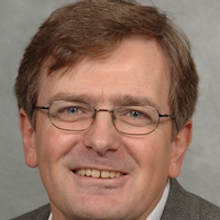
- Engineering the Golden State: From Placer Mining to Silicon Valley (P, G)
- Technology, Law, and American Democracy: Learning from Lincoln (P, G)
- Coming Full Circle: R&D in Historical Perspective (P, G)
Dr. Steven W. Usselman is Professor of History and Chair of the School of History and Sociology at the Georgia Institute of Technology. Usselman studies technology, innovation, and industrial change, with primary focus on the United States since 1820. Situating engineering and industrial research in political and economic context, his scholarship and teaching offer historical perspectives on contemporary policy issues. Usselman has published over three dozen refereed articles and book chapters, including many pertaining to IBM and the computer industry. He has twice received the Newcomen Prize for scholarship in business history and was awarded the 2004 Harold F. Williamson Medal for mid-career excellence from the Business History Conference. In 2007-2008, he served as President of the Society for the History of Technology (2007-2008). His book Regulating Railroad Innovation: Business, Technology, and Politics in America, 1840-1920 (Cambridge University Press, 2002) received the Ellis W. Hawley Prize from the Organization of American Historians and the Hilton Prize in transport history. Usselman co-edited The Challenge of Remaining Innovative: Insights from Twentieth-Century American Business(Stanford University Press, 2009) and served as senior editor for technology for The Oxford Encyclopedia of the History of American Science, Medicine, and Technology (2014). From 2003 through 2008, he was Associate Director for Research at the Georgia Tech's Sloan Center for Paper Business and Industry Studies (CPBIS). A former Hagley Fellow, Usselman received his Ph.D. in history from the University of Delaware in 1985 and earned bachelor’s degrees in History and in Bioengineering at UCSD. He is currently at work on three projects: a revision of the classic text The Rise of Big Business; an analysis of new business practices associated with changes global transport and logistics since 1945; and a study of hydraulic engineering and California industrialization during the first half of the twentieth century, focused on the centrifugal pump and its spin-offs